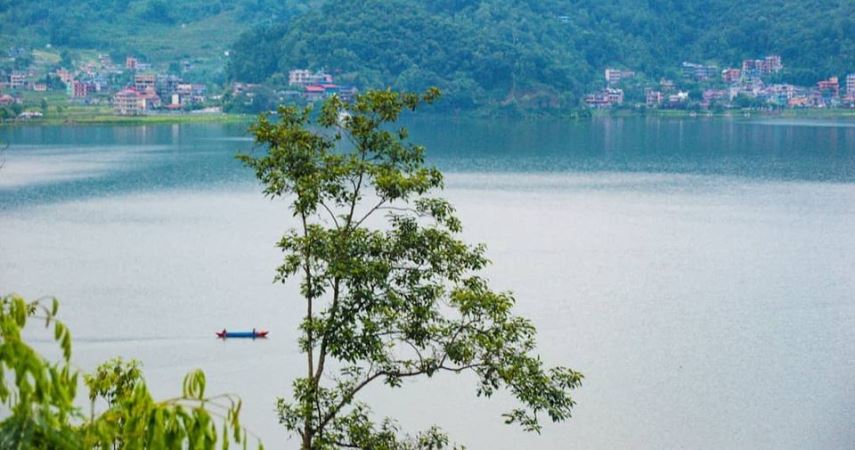4,000 ropanis of private land under water in Pokhara

By Smita Adhikari
Pokhara, Sept. 25: Nearly 4,000 ropanis of private land is under water in all the eight lakes of Pokhara. This is a huge portion considering the fact that all the lakes occupy a total combined area of 20,000 ropanis. According to the Lake Conservation Ground Report prepared by the then Ministry of Land Reform in 2008, a total of 3,984 ropanis of the lakes’ land is registered in the names of individuals.
Phewa Lake has the largest area, 2,100 ropanis, under private ownership and Gunde Lake has the smallest, 50 ropanis. Similarly, 657 ropanis of land in Rupa Lake, 500 ropanis in Maidi Lake, 216 ropanis in Begnas Lake, 213 ropanis in Dipang Lake, 197 ropanis in Khaste Lake and 51 ropanis in Neureni Lake is under private ownership. And 90 per cent of this privately registered land is under the lakes’ waters.
Landslides and erosions are two major factors that caused the submersion of people’s ancestral land over time. But equally to blame are the practices of ‘Mukhiya Jimal Jimma’ and ‘Aamod Pramod’ which were prevalent in Pokhara before the Survey Department began scientifically surveying the areas of the lakes from 1978.
Under these customs, people simply needed to claim a piece of land as their own for it to formally belong to them. For this, they only needed to get the approval of the local chief, called Mukhiya or Jimmawal. “The lakes were shrinking due to the accumulation of soil and rocks and people assumed that they would completely dry up one day. Thus, they rushed to claim the land haphazardly,” Bishwo Prakash Lamichhane, who was the local survey coordinator for the 2008 report, told The Rising Nepal.
In the case of Phewa Lake, there is another reason for the presence of private land under the water. When the lake’s dam burst in 1973, it flooded the downstream areas and inundated private property. Similarly, when the dam was reconstructed in 1983, the water level rose and submerged more private lands. A dam was also constructed in Begnas Lake in 1990 which again raised the water level there and put many people’s land under water.
The people in these areas did not let go of their claims on their ancestral lands in the hopes that they would be compensated for their losses. This means that the lands under Pokhara’s lakes still technically belong to the individuals to this day.
This ownership status has raised complications in ascertaining the actual area of the lakes and clearing the surrounding structures that do not meet the set distance requirements. Furthermore, pollution and encroachment are continuously shrinking the lakes and some of these lands that previously lay underwater are now surfacing again.
Recent News

Do not make expressions casting dout on election: EC
14 Apr, 2022
CM Bhatta says may New Year 2079 BS inspire positive thinking
14 Apr, 2022
Three new cases, 44 recoveries in 24 hours
14 Apr, 2022
689 climbers of 84 teams so far acquire permits for climbing various peaks this spring season
14 Apr, 2022
How the rising cost of living crisis is impacting Nepal
14 Apr, 2022
US military confirms an interstellar meteor collided with Earth
14 Apr, 2022
Valneva Covid vaccine approved for use in UK
14 Apr, 2022
Chair Prachanda highlights need of unity among Maoist, Communist forces
14 Apr, 2022
Ranbir Kapoor and Alia Bhatt: Bollywood toasts star couple on wedding
14 Apr, 2022
President Bhandari confers decorations (Photo Feature)
14 Apr, 2022










